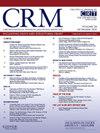Left ventricular reverse remodeling and reduction of interstitial fibrosis in patients with severe aortic stenosis who underwent transcatheter aortic valve implantation
IF 1.6
Q3 CARDIAC & CARDIOVASCULAR SYSTEMS
引用次数: 0
Abstract
Background
Left ventricular (LV) structural and functional changes have been reported in patients with aortic stenosis (AS) who have undergone transcatheter aortic valve implantation (TAVI); however, the relationship between change in LV structure and systolic function and tissue characteristics assessed via cardiovascular magnetic resonance imaging (CMRI) post-TAVI has been not fully elucidated. This study aimed to investigate this relationship in patients with severe AS who underwent TAVI and CMRI.
Methods
In this retrospective study, 65 patients who underwent TAVI and CMRI at the 6-month follow-up were analyzed. The relationship between percent changes in LV end-diastolic volume (LVEDV), LV end-systolic volume (LVESV), LV ejection fraction (LVEF), and LV mass (LVM) (⊿LVEDV, ⊿LVESV, ⊿LVEF, and ⊿LVM) and those in the native T1 value (⊿native T1) was analyzed using a correlation analysis. Moreover, extracellular volume fraction (ECV) value changes were analyzed.
Results
The ⊿native T1 significantly decreased from 1292.8 (1269.9–1318.4) ms at pre-TAVI to 1282.3 (1262.6–1310.2) ms at the 6-month follow-up (P = 0.022). A significant positive correlation between ⊿LVEDV, ⊿LVESV, and ⊿LVM and ⊿native T1 (r = 0.351, P = 0.004; r = 0.339, P = 0.006; r = 0.261, P = 0.035, respectively) and a tendency toward a negative correlation between ⊿LVEF and ⊿native T1 (r = −0.237, P = 0.058) were observed. The ECV value increased significantly from 26.7 % (25.3–28.3) to 28.2 % (25.7–30.5) (P = 0.002).
Conclusions
The decrease in native T1 might be associated with LV reverse remodeling. Evaluating structural and functional changes using CMRI may be useful for patient management.
接受经导管主动脉瓣植入术的重度主动脉瓣狭窄患者的左心室反向重塑和间质纤维化减少。
背景:接受经导管主动脉瓣植入术(TAVI)的主动脉瓣狭窄(AS)患者的左心室(LV)结构和功能变化已有报道;然而,TAVI术后LV结构和收缩功能的变化与心血管磁共振成像(CMRI)评估的组织特征之间的关系尚未完全阐明。本研究旨在调查接受 TAVI 和 CMRI 的重度 AS 患者的这种关系:在这项回顾性研究中,对 65 名接受 TAVI 和 CMRI 的患者进行了 6 个月的随访分析。采用相关性分析方法分析了左心室舒张末期容积(LVEDV)、左心室收缩末期容积(LVESV)、左心室射血分数(LVEF)和左心室质量(LVM)(⊿LVEDV、⊿LVESV、⊿LVEF 和⊿LVM)的百分比变化与原生 T1 值(⊿原生 T1)的百分比变化之间的关系。此外,还分析了细胞外体积分数(ECV)值的变化:结果:⊿原生 T1 从 TAVI 术前的 1292.8 (1269.9-1318.4) ms 显著降至 6 个月随访时的 1282.3 (1262.6-1310.2) ms(P = 0.022)。⊿LVEDV、⊿LVESV和⊿LVM与⊿原生T1之间存在明显的正相关性(r = 0.351,P = 0.004;r = 0.339,P = 0.006;r = 0.261,P = 0.035),并观察到⊿LVEF 和⊿native T1 之间呈负相关趋势(r = -0.237,P = 0.058)。ECV值从26.7%(25.3-28.3)明显增加到28.2%(25.7-30.5)(P = 0.002):结论:原生T1的降低可能与左心室反向重塑有关。使用CMRI评估结构和功能变化可能有助于患者管理。
本文章由计算机程序翻译,如有差异,请以英文原文为准。
求助全文
约1分钟内获得全文
求助全文
来源期刊

Cardiovascular Revascularization Medicine
CARDIAC & CARDIOVASCULAR SYSTEMS-
CiteScore
3.30
自引率
5.90%
发文量
687
审稿时长
36 days
期刊介绍:
Cardiovascular Revascularization Medicine (CRM) is an international and multidisciplinary journal that publishes original laboratory and clinical investigations related to revascularization therapies in cardiovascular medicine. Cardiovascular Revascularization Medicine publishes articles related to preclinical work and molecular interventions, including angiogenesis, cell therapy, pharmacological interventions, restenosis management, and prevention, including experiments conducted in human subjects, in laboratory animals, and in vitro. Specific areas of interest include percutaneous angioplasty in coronary and peripheral arteries, intervention in structural heart disease, cardiovascular surgery, etc.
 求助内容:
求助内容: 应助结果提醒方式:
应助结果提醒方式:


